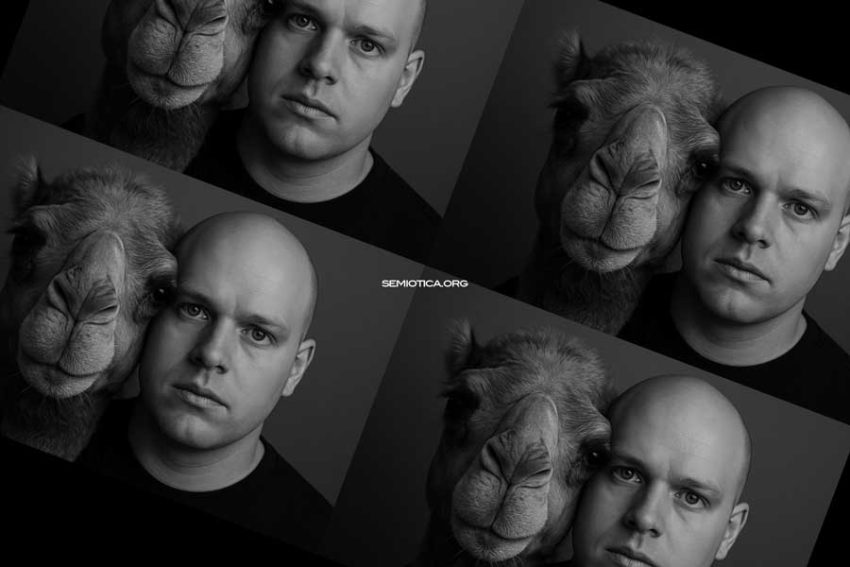The semiotic investigation of myth often returns to two key notions that attempt to capture its smallest meaningful components: the mythologeme and the mytheme. Both terms appeared in the first half of the twentieth century, each emerging from a different intellectual tradition. Their comparison reveals two distinct ways of thinking about the inner organization of myth — one rooted in psychoanalytic hermeneutics, the other in structural linguistics.
The notion of mythologeme originated in the joint work of Carl Jung and Carl Kerényi, Introduction to the Essence of Myth (1941). They used the term to designate mythological plots, scenes, and images characterized by universality — elements that reappear across cultures and epochs. These recurrent forms, Jung and Kerényi argued, could not be fully translated into non-mythological language. As they put it, “If it is an authentic mythologeme, its meaning is something that cannot be well or fully conveyed by non-mythological means.”
This definition endows the mythologeme with an ambivalent nature: it can be regarded both as a completed form and as a seed for new meanings. Kerényi compared it to music, which can be perceived and explained at the same time — an image that highlights its dual status as both structure and process. Closely connected to this conception is the archetype, widely used in Jungian psychoanalysis, which expresses a similar idea of universal, transhistorical meaning condensed into symbolic form.
Seventeen years later, Claude Lévi-Strauss proposed the second concept, the mytheme, in Anthropologie structurale (1958). In doing so, he explicitly distanced himself from Jung and Kerényi. Their “German psychoanalytic mythologeme”, he argued, remained too closely tied to myth as language; in contrast, mythological thought, in his view, is neither language nor speech but “both together”. Borrowing from Saussure’s distinction between langue and parole, Lévi-Strauss proposed that myth operates on a third level that combines their properties.
He explained: “Myth uses a third referent which combines the properties of the first two. On the one hand, a myth always refers to events alleged to have taken place long ago, but what gives the myth an operational value is that the specific pattern described is timeless; it explains the present and the past as well as the future.”
From this insight Lévi-Strauss derived his concept of mytheme as the gross constituent unit of myth. Mythemes, he wrote, can be “dissected from the level of the sentence”, but they exist “only on a higher level” than phonemes, morphemes, or sememes; otherwise, myth would “become confused with any other kind of speech”. Each mytheme expresses a relation — often binary or oppositional — and gains meaning only through its connection to other relations. In this sense, mythemes are bundles of relations rather than independent elements. Their meaning is both diachronic and synchronic, functioning within a two-dimensional time frame that integrates the characteristics of langue and parole.
Lévi-Strauss offered a memorable analogy: a mytheme is like a harmony in an orchestral score, which must be read both horizontally (through time) and vertically (as a simultaneous structure). Thus, myth, language, and music form three parallel systems: sentences, words, and phonemes correspond in varying ways to the structural levels of each domain. As he observed, “music emphasizes the sound aspect already embedded in language, while mythology emphasizes the sense aspect, the meaning aspect, which is also embedded in language.”
The contrast between these two models is striking. Jung and Kerényi’s mythologeme embodies the universal image of myth — an invariant symbolic pattern found in diverse traditions. Lévi-Strauss’s mytheme, by contrast, is a relational and analytical unit, emerging from the interplay of oppositions within a mythic narrative. Both terms share the linguistic suffix -eme, which signals their emic nature, but their theoretical functions differ: the mythologeme operates at the level of symbolic content, while the mytheme functions as a dynamic structural relation.
Zaporozhtseva notes that this distinction raises two essential questions.
First: if mythemes are bundles of relations, can they truly claim universality, or are they bound to the specific context of a narrative?
Second: if mythemes belong to the syntagmatic level of mythic discourse, can they still be regarded as emic units in the strict linguistic sense?
These problems reveal that the ontology of the mytheme is more complex than that of the mythologeme. Whereas the latter clearly parallels the lexeme, the former, situated between relation and invariance, functions as a kind of hybrid unit — neither purely structural nor purely symbolic. This tension between dynamic structure and fixed image, between relation and archetype, defines much of the theoretical dialogue that continues to surround the semiotic analysis of myth.
Reference: Lyudmyla Zaporozhtseva, Mythologemes and mythemes: Semiotic markers of myth in contemporary mass culture. Department of Semiotics, University of Tartu.
